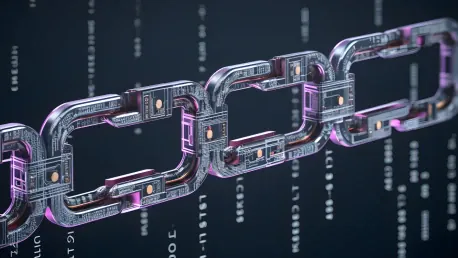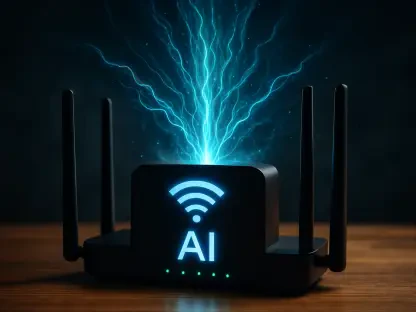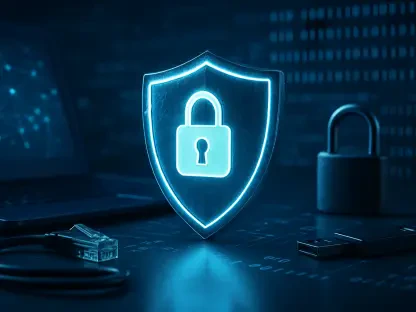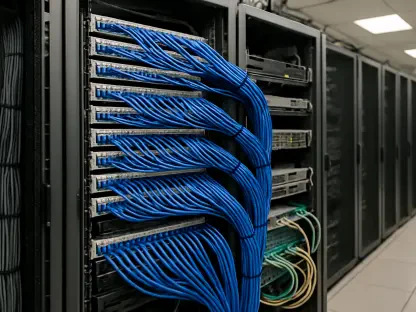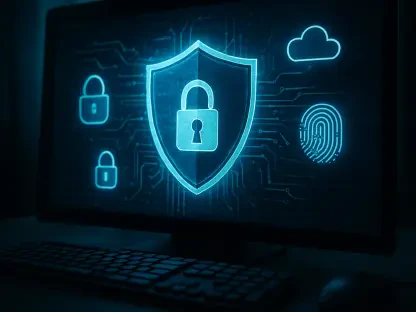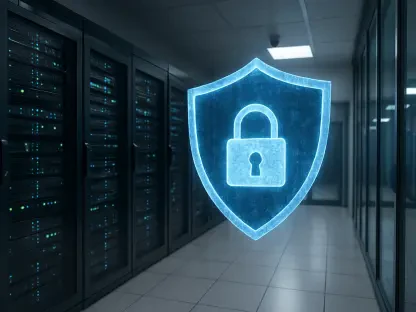Blockchain technology has revolutionized various sectors by providing decentralized and transparent solutions. However, the increasing adoption of blockchain has also attracted significant security threats. The industry is now focusing on evolving its security measures to tackle these emerging threats effectively.
The Importance of Robust Security Measures
The blockchain sector has witnessed several high-profile breaches, underscoring the critical need for robust security measures. Incidents like the $624 million Axie Infinity Ronin bridge breach and the $611 million Poly Network heist have highlighted the severe consequences of compromised security within blockchain platforms. These breaches have not only resulted in substantial financial losses but have also shaken the trust of users and investors in blockchain technology.
High-Profile Breaches and Their Impact
The Axie Infinity Ronin bridge breach and the Poly Network heist serve as stark reminders of the vulnerabilities that exist within blockchain systems. These incidents have exposed the weaknesses in security protocols and have prompted the industry to prioritize the development of more advanced security measures. The financial and reputational damage caused by these breaches has emphasized the need for continuous improvements in blockchain security. In response, the industry has become increasingly vigilant, focusing on the integration of cutting-edge technology to safeguard digital assets.
The consequences of these breaches are far-reaching, affecting not just the victimized platforms but the entire blockchain ecosystem. Trust, which is fundamental to any financial technology, becomes eroded when high-profile hacks occur. For startups and well-established companies alike, ensuring robust security is not merely about protecting assets; it’s about maintaining the integrity and trust that users have in the technology. This dynamic makes the evolution of blockchain security not just a technical challenge but a fundamental business imperative that impacts user confidence and market stability.
Regulatory Actions and Compliance Challenges
In addition to theft, the blockchain industry has faced significant compliance challenges. Regulators have imposed fines amounting to over $5.8 billion in crypto-related penalties by 2023. These regulatory actions highlight the necessity of integrating advanced security protocols to mitigate risks and safeguard assets. Compliance with regulatory standards is now seen as a crucial component of blockchain security, ensuring that platforms adhere to stringent security measures.
Regulatory scrutiny is pushing blockchain entities to adopt robust measures that go beyond mere technical advancements. Ensuring compliance with regulatory requirements like Anti-Money Laundering (AML) and Know Your Customer (KYC) laws is critical. By adhering to these norms, platforms are better equipped to identify illicit activities and prevent fraud, thereby enhancing their security posture. These regulatory measures are not merely obstacles but are pivotal tools in fostering a trustworthy and secure blockchain ecosystem. They compel companies to adopt best practices and state-of-the-art technologies, translating to a more secure environment for all stakeholders.
Proactive and Holistic Security Frameworks
The industry is shifting towards a more proactive and holistic security framework that incorporates multiple layers of protection. This approach aims to address the various security challenges faced by blockchain platforms and ensure the resilience of the digital economy.
Zero Trust Architecture (ZTA)
One of the key strategies being adopted is the implementation of Zero Trust Architecture (ZTA). ZTA is designed to prevent unauthorized access by continuously validating every user, device, and transaction within the network. Unlike traditional security models, where entities were often trusted by default once inside a network, ZTA ensures that trust is never assumed. By 2024, it is expected that 63% of organizations will implement some form of ZTA, integrating its principles to strengthen blockchain platforms.
ZTA’s adoption represents a paradigm shift in securing blockchain networks. By restricting access and continuously validating every interaction, ZTA minimizes the risk of breaches that exploit the inherent trust of legacy systems. The continuous verification process bolsters security by ensuring that every component of a blockchain network is scrutinized, reducing the likelihood of unchecked threats slipping through the cracks. This architecture is particularly effective in a decentralized system where numerous nodes and users interact, making it an ideal security measure for the evolving demands of blockchain technology.
Examples of ZTA Implementation
Platforms like Polygon and Fedrok AG exemplify the implementation of ZTA in blockchain. Polygon has enhanced its validator network security by requiring continuous verification of node operators. Fedrok AG has integrated ZTA into its Proof of Green (PoG) consensus mechanism, ensuring ongoing legitimacy verification aligned with sustainable practices. These advancements illustrate how ZTA can significantly mitigate risks and promote a secure blockchain environment.
Polygon’s approach of requiring ongoing verification of node operators ensures that each participant in the network is continuously vetted, enhancing the overall integrity of the platform. Similarly, Fedrok AG’s integration of ZTA within its Proof of Green consensus adds a layer of environmental accountability alongside security. By combining ZTA with green initiatives, these platforms set a precedent for how blockchain can address security and sustainability in tandem. The dual focus on verification and environmental responsibility showcases a forward-thinking approach that balances technological needs with broader societal concerns.
Compliance as a Security Enabler
Compliance has emerged as a crucial component of blockchain security. The industry’s response to compliance-related collapses highlights the inextricable link between robust regulatory adherence and platform security.
Regulatory Frameworks and Their Impact
Regulatory frameworks like the EU’s Markets in Crypto-Assets (MiCA) and evolving Anti-Money Laundering (AML) standards now act as security enablers. These regulations mandate sophisticated transaction monitoring systems, robust identity verification protocols, and comprehensive risk management frameworks to preemptively identify and address vulnerabilities. Compliance with these standards ensures that blockchain platforms are equipped to handle security threats effectively.
These regulations serve a dual purpose: they provide clear guidelines for compliance while also facilitating a secure operational environment. Platforms that adhere to these standards benefit from a structured approach to risk management, allowing them to preemptively address potential vulnerabilities. The implementation of robust identity verification protocols, for instance, helps mitigate risks associated with fraudulent activities. Transaction monitoring systems add another layer of oversight, ensuring that any suspicious activities are promptly identified and addressed. By aligning with these frameworks, blockchain platforms enhance their security while promoting greater transparency and trust.
Integration of Compliance and Security
Platforms like Fedrok AG and Celo exemplify the integration of compliance and security. Fedrok AG operates under stringent Swiss regulatory oversight, pursuing ISO 9001 certification and implementing Zero Trust compliance architecture. Similarly, Celo collaborates with government regulators to implement compliance requirements, strengthening their platform’s security controls. These examples demonstrate how meeting regulatory standards can naturally enhance the security of blockchain platforms.
Utilizing regulatory compliance as a security enabler leverages the strengths of both approaches. For instance, Fedrok AG’s pursuit of ISO 9001 certification anchors its security measures in recognized international standards. This not only enhances technical security but also builds institutional trust. Celo’s collaboration with government regulators exemplifies how proactive engagement with regulations can fortify platform security. By integrating regulatory frameworks into their operational models, these platforms do not just comply with laws but fundamentally enhance their security architectures, paving the way for a resilient digital economy.
Evolution of Consensus Mechanisms
The evolution of consensus mechanisms is another significant trend in blockchain security. Traditional mechanisms like Bitcoin’s Proof of Work (PoW) have faced criticism for their massive energy consumption, prompting the development of more efficient alternatives.
Transition from PoW to PoS
Ethereum’s transition from PoW to Proof of Stake (PoS) has reduced energy usage by 99.95%. However, PoS introduced challenges such as potential centralization among wealthy token holders and the risk of ‘nothing-at-stake’ attacks. To address these limitations, new consensus mechanisms are being developed.
The shift from PoW to PoS represents a significant advancement in addressing the scalability and energy efficiency of blockchain platforms. While PoS offers a more sustainable solution, it isn’t without its challenges. The centralization risk in PoS arises from the influence that wealthier participants can exert, potentially undermining the egalitarian promise of blockchain technology. ‘Nothing-at-stake’ attacks, where validators have little to lose by supporting multiple blockchain forks, also pose a threat. To address these issues, innovative consensus mechanisms are being crafted to enhance security while maintaining the efficiency and lower energy footprint that PoS offers.
Innovative Consensus Mechanisms
Platforms like Polygon and Fedrok AG are leading the way in developing innovative consensus mechanisms. Polygon has built on Ethereum’s PoS model by adding validator committees and checkpointing systems to enhance security. Fedrok AG’s Proof of Green (PoG) consensus mechanism not only improves security but also integrates sustainability by requiring validators to prove their environmental accountability. These advancements showcase how ethical practices can be incorporated into advanced technology without compromising performance.
Polygon’s improvements to the PoS model through validator committees and checkpointing systems ensure a more secure and resilient network. These enhancements mitigate the risks of centralization and promote a more decentralized validation process. Additionally, Fedrok AG’s Proof of Green mechanism presents a unique approach by integrating environmental responsibility into the security framework. By requiring validators to demonstrate their environmental practices, PoG not only secures the blockchain but also aligns with global sustainability goals. This dual focus on security and ethical responsibility exemplifies how blockchain can evolve to meet contemporary demands without sacrificing foundational principles.
Decentralization as a Security Strategy
Blockchain technology has brought significant changes across numerous sectors by offering decentralized and transparent solutions. This advancement has made processes more efficient and trustworthy. However, as blockchain technology becomes more widely adopted, it inevitably draws the attention of malicious entities, leading to security threats that are becoming increasingly sophisticated and prevalent. Consequently, the industry is now prioritizing the enhancement of its security protocols to effectively counter these evolving threats.
To address these challenges, blockchain developers and security experts are collaborating to develop more robust cryptographic techniques, advanced consensus algorithms, and comprehensive monitoring systems. The goal is to create an impenetrable security framework that can detect and mitigate potential vulnerabilities before they can be exploited. Additionally, there is a growing emphasis on educating users about best practices in security to prevent human errors, which are often a weak link in the chain. As blockchain continues to grow and integrate into different sectors, the focus on fortifying its security measures is more critical than ever to ensure its integrity and reliability.
